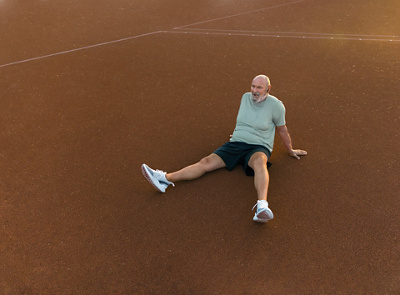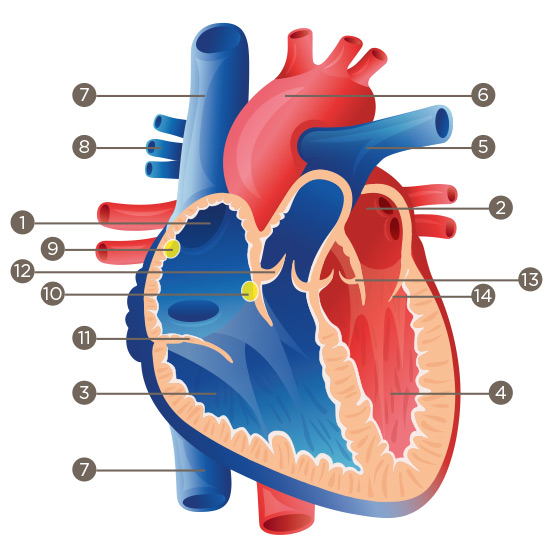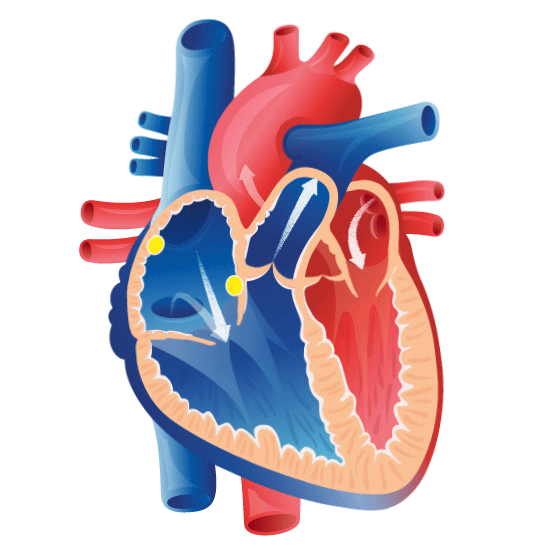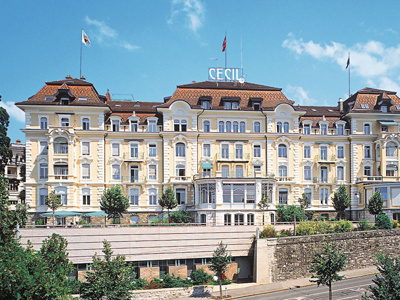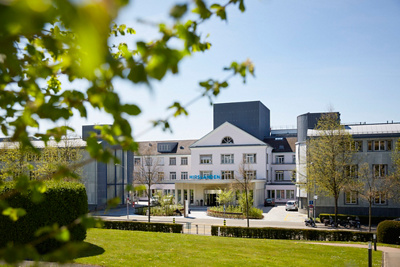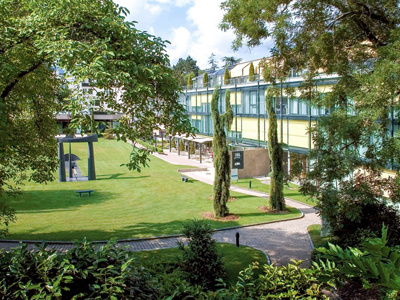The heart is one of our most powerful muscles. Thousands and thousands of muscle fibers contract and relax in time with an electrical impulse - around 100,000 times a day. Thanks to this constant pulsation, our heart supplies all our cells and organs with vital oxygen and nutrients via blood vessels. We support you in cardiac medicine from prevention to treatment and aftercare - at all stages of your life. You can expect the highest quality and individual care from us. We focus on your needs and ensure that you feel comfortable with us at all times.
Read exciting facts about the heart, blood vessels and their interaction. You will also find information about clinical pictures and our contact persons for you.
The heart & the vessels
The heart – also commonly known as the blood pump of the human being – usually moves 60 to 80 times a minute and supplies the body with oxygen and nutrients. Find out exciting information about the heart, the heart rhythm, the blood vessels and how they work together. You will also find an overview here of the most common cardiac and vascular diseases.
Heart
The left and right halves of the heart consist of an atrium and a ventricle respectively. Both halves are separated by the cardiac septum. The used, oxygen-poor blood reaches the right half of the heart through the veins. From there, it is pumped into the lung to be resupplied with oxygen. The oxygen-rich blood is then transported over the left half of the heart into the main artery and supplies the whole body with oxygen. The four heart valves – two on either side – ensure that the blood flows in the correct direction.
The healthy heart beats in a regular rhythm between 60 and 80 times per minute and necessitates four to six litres of blood through the arteries during this time. (360 litres per hour, 8640 litres per day). The heart rate increases during sporting activity or times of emotional stress; during period of sleep, it slows down.
Heart rhythm & heart beat
Heart beats are generated and controlled by the heart's electrical conduction system. Each heart beat (lat. systole) is generated automatically by the natural cardiac pacemaker, the sinus node. The electrical signal generated in the sinus node spreads across the atria and ensures that they contract and automatically push the blood towards the heart ventricles.
Afterwards, the electrical impulse is sent further into the middle of the heart to the AV nodes (atrioventricular nodes) before it is transferred to the ventricles, which contract and pump the body to the lungs and into the body. During a regular heart beat, first the atria and then the ventricles contract. The AV node is tasked with relaying the beat correctly to the main ventricles so that the heart does not beat too quickly or too slowly.
If erroneous electrical impulses occur or if these spread out incorrectly over the conductive tissue in the heart muscle, they impact on the heart function. This is manifested in an irregular, chaotic, overly quick or slow heart rhythm.
The majority of the electrical conduction of the heart can be illustrated with the help of an electrocardiogram (ECG). This illustrates whether the electrical activity of the heart is regular and coordinated.
Several waves are visible on the ECG: The P wave reflects stimulation of the atrium, which pushes the blood into both ventricles. This is followed by a high deflection, the R wave. This corresponds to the stimulation of both ventricles. The subsequently registered T wave shows the "electrical" recovery of the heart cells. An ECG cannot record the electrical impulse generated in the sinus node; only the P wave which is generated is recorded.


Blood vessels
If all the blood vessels of an adult person were lined up, they would measure around 100,000 km in length. Together with the heart, all the blood vessels form the anatomical basis for the blood circulation and thus for the transport of oxygen and nutrients throughout the whole body.
There are different types of blood vessels:
- Aorta (main artery)
- Arteries (pulse arteries)
- Arterioles (small pulse arteries)
- Capillaries
- Veins (blood vessels)
- Venoles (small veins)
- Vena cava veins
Aorta (main artery)
The aorta originates directly from the heart, so it is called the main artery. It transports the blood from the left ventricle to the arterial vessels of the blood circulation.
Arteries (pulse arteries)
All the blood vessels which transport the blood away from the heart into the body are considered to be arteries. With the exception of the pulmonary arteries, which carry the oxygen-poor blood from the right half of the heart into the lungs, the arteries carry the oxygen-rich blood. Arteries are also termed pulse or radial arteries, as the pulse can be detected with the major arteries.
Arterioles (small pulse arteries)
Arterioles are transitional zones from the arteries to the capillaries in the vascular system. They are located in front of the capillaries and behind the arteries. Arterioles can dilate and contract, and in doing so they regulate the blood supply to the organs.
Capillaries
Blood capillaries connect the venous and arterial vascular system. They are the smallest bronchioles of the blood vessels and form a fine net, in which the metabolic exchange between blood vessels and the body tissue takes place. The lymphatic capillaries, which collect lymph fluid, are the initial section of the lymphatic system in the lymph vascular system.
Veins (blood vessels)
The veins carry the blood circulating in the body back towards the heart. They are divided into deep and surface veins, whereby more than 90% of all blood flows back in the deep veins. In the case of an adult, this corresponds to around 8,000 litres of blood transported per day. All veins carry venous (oxygen-poor blood) right to the lung veins. Along with the capillaries and the venoles, they are part of the low-pressure system of the bloodstream.
Venoles (small veins)
Venoles are the smallest veins and still visible to the naked eye. For example, they are found on the sclera of the eyes (the white of the eye) in the form of fine vascular drawings.
Vena cava veins
They are two major veins which collect venous (oxygen-poor) blood from the body veins and carry it to the right atrium. There are upper vena cava veins, which collect blood from the head, neck, chest and the upper extremities. The lower vena cava veins.
Did you know that…
- The heart pumps 6-8 liters of blood per minute through 100,000 km of blood vessels.
- A healthy heart beats 60 to 80 times per minute.
- While sleeping the heart rate decreases to 45 to 55 beats per minute.
- The first heart cell in the embryo begin to beat after only 4 weeks of conception.
- With a life expectancy of 80 years the heart will beat three billion times an pump 250 million liters of blood.
Santé et prévention
Prevention plays a crucial role in preserving our heart healthy. Heart diseases are the leading cause of death in the world, but many of them can be avoided through preventive measures. These include a balanced diet, regular physical activity and control of risk factors such as high blood pressure, diabetes and cholesterol levels. Early detection and regular health check-ups are also essential for identifying and treating heart problems at an early stage.
Many heart diseases can be prevented through regular exercise. Proper exercise can help heart patients feel like their old selves again. It doesn’t always have to be intense, high-stamina activity; what is most important is a good mix of endurance, strength, coordination and balance training.
Sports for the heart
Advantages:
- The heart works more efficiently
- Resting blood pressure drops
- Blood lipid levels are reduced
- There is lower risk of hardening of the arteries
- Helps control weight
Recommended training:
- Basic: 5 x 30 min. per week
- Advanced: additional 3 x per week, 20-60 minutes
Advantages:
- Improved balance
- Improved responsiveness and coordination
- More endurance in everyday life and during exercise
- Less risk of falling
Recommended training:
- 30 min. endurance sessions
- 5-10 min. to complement weight training
Advantages:
- Improved core and axial leg stability
- Improved balance
- Improved responsiveness and coordination
- Protection against injuries
- Better muscular endurance
Recommended training:
- 3 x per week or daily
- May be combined with strength or endurance sessions
Advantages:
- Greater strength reduces stress on the cardiovascular system
- Improved core and joint stability
- Greater potential during endurance training
- Bigger muscles = higher energy consumption
Recommended training:
- 2-3 x per week
- 13-20 repetitions in 2-4 sets
- A recommended addition to endurance training
Advantages:
- Good core stabilization forms the basis for any sport
- Protection against overstraining and injuries
- Better resilience in day-to-day life
Recommended training:
- 3 x per week or daily
- Increase duration according to capabilities
- Completed during a circuit training session
- May be combined with strength or endurance sessions
Diagnostics and treatment
A large number of diseases come under cardiac and vascular diseases which affect the heart or the blood vessels. The umbrella term cardiac and vascular disease includes all diseases of the heart and the blood vessels. This includes, among others, strokes, arteriosclerosis, heart attack, cardiac arrhythmias, congenital heart defects, thrombosis, varicose veins and phlebitis. Cardiovascular disease is one of the most common causes of death in Switzerland. Therefore, it is important to find out about the most common types, along with their symptoms and causes. Only then can you react quickly and correctly in an emergency.
Heart attack
A heart attack occurs when a coronary artery closes completely. You need to act quickly. Find out more about the symptoms.
Stroke
Learn more about the symptoms and what to do if you suspect a stroke.
Cardiac arrhythmias
If the heart beats out of sync it is not just unpleasant, it can also lead to dangerous situations. Find out more.
Other heart diseases
Information about further disease patterns
Cardiovascular rehabilitation
People who have had surgery or a severe cardiovascular disease cannot accurately judge their physical strength and level of fitness. Cardiovascular rehabilitation increases patients’ stamina in a controlled environment, which in turn boosts their confidence. This is particularly true for patients with several existing illnesses that require interdisciplinary medical care.
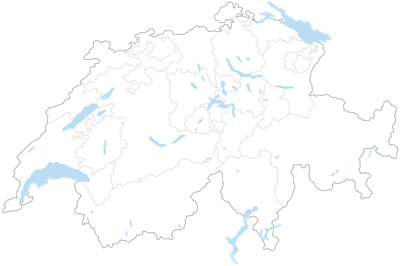
We help with every episode in your life
We are your partner for all questions relating to your body's health: if you have any concerns or worries, we are always available for you via the Hirslanden Healthline or the Hirslanden app.

